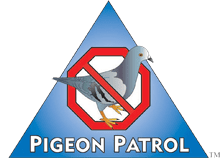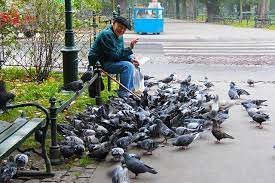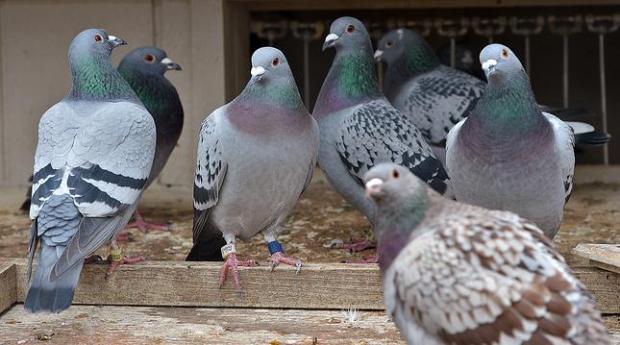
by Pigeon Patrol | Feb 7, 2022 | 4-S Gel Bird repellent, Animal Deterrent Products, Bird Deterrent Products, Bird Law, Bird Netting, Bird Spikes
Mattawa’s pigeon feeders have been warned—the free lunches stop now.
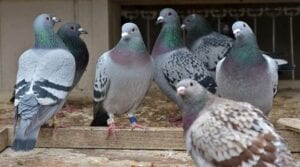
Council recently approved a bylaw prohibiting the feeding of pigeons, a ban that encompasses the entire municipality.
Cracked corn, seeds, cereal grains, wheat, and barley make delectable dishes for pigeons, and many people enjoy indulging this aviary desire to while away some time, or to make the birds’ lives a little easier.
But for Mattawa residents the practice is no longer accepted. And those who continue distributing the seed may be fined $250.
See: Pigeon poop proves a problem. Police involved
Moreover, if one attracts pigeons, and this flock results in a public nuisance, another fine of $250 can be issued. This is separate from the feeding fine. Think twice before installing that pigeon motel in your garden.
The bylaw came about after the municipality received numerous complaints regarding the birds over the past year.
“Pigeons are destroying rooftops, property, and our beautiful downtown area with their feces,” explained Councillor Loren Mick, in his report to council.
“The biggest problem” he noted is also the most preventable: “people feeding them.”
Hence the bylaw to remove “unwanted pigeon pests,” which will “promote the use and enjoyment of property in a healthy and sanitary manner.”
Source
Pigeon Patrol Products & Services is the leading manufacturer and distributor of bird deterrent (control) products in Canada. Pigeon Patrol products have solved pest bird problems in industrial, commercial, and residential settings since 2000, by using safe and humane bird deterrents with only bird and animal friendly solutions. At Pigeon Patrol, we manufacture and offer a variety of bird deterrents, ranging from Ultra-flex Bird Spikes with UV protection, Bird Netting, 4-S Bird Gel and the best Ultrasonic and audible sound devices on the market today.
Voted Best Canadian wholesaler for Bird Deterrent products ten years in a row.
Contact us at 1- 877– 4– NO-BIRD, (604) 585-9279 or visit our website at www.pigeonpatrol.ca
Pigeon/Pigeon Patrol / Pigeons Roosting / Vancouver Pigeon Control /Bird Spikes / Bird Control / Bird Deterrent / Pigeon Deterrent? Surrey Pigeon Control / Pest /Seagull deterrent / Vancouver Pigeon Blog / Birds Inside Home / Pigeons in the cities / Ice Pigeons/ What to do about pigeons/ sparrows , Damage by Sparrows, How To Keep Raccoons Away, Why Are Raccoons Considered Pests/ De-fence / Pigeon Nesting/ Bird Droppings / Pigeon Dropping/ woodpecker control/ Professional Bird Control Company/ Keep The Birds Away/ Birds/rats/ seagull/pigeon/woodpecker/ dove/sparrow/pidgeon control/pidgeon problem/ pidgeon control/flying rats/ pigeon Problems/ bird netting/bird gel/bird spray/bird nails/ bird guard

by Pigeon Patrol | Feb 2, 2022 | 4-S Gel Bird repellent, Animal Deterrent Products, Bird Deterrent Products, Bird Law, Bird Netting, Bird Spikes
Birds are frequent sources of emerging human infectious diseases. Viral particles were enriched from the feces of 51 wild urban pigeons (Columba livia) from Hong Kong and Hungary, their nucleic acids randomly amplified and then sequenced. We identified sequences from known and novel species from the viral families Circoviridae, Parvoviridae, Picornaviridae, Reoviridae, Adenovirus, Astroviridae, and Caliciviridae (listed in decreasing number of reads), as well as plant and insect viruses likely originating from consumed food. The near full genome of a new species of a proposed parvovirus genus provisionally called Aviparvovirus contained an unusually long middle ORF showing weak similarity to an ORF of unknown function from a fowl adenovirus. Picornaviruses found in both Asia and Europe that are distantly related to the turkey megrivirus and contained a highly divergent 2A1 region were named mesiviruses. All eleven segments of a novel rotavirus subgroup related to a chicken rotavirus in group G were sequenced and phylogenetically analyzed. This study provides an initial assessment of the enteric virome in the droppings of pigeons, a feral urban species with frequent human contact. 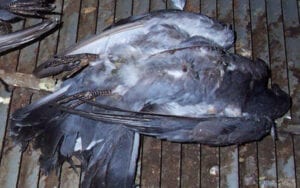
Source
Pigeon Patrol Products & Services is the leading manufacturer and distributor of bird deterrent (control) products in Canada. Pigeon Patrol products have solved pest bird problems in industrial, commercial, and residential settings since 2000, by using safe and humane bird deterrents with only bird and animal friendly solutions. At Pigeon Patrol, we manufacture and offer a variety of bird deterrents, ranging from Ultra-flex Bird Spikes with UV protection, Bird Netting, 4-S Bird Gel and the best Ultrasonic and audible sound devices on the market today.
Voted Best Canadian wholesaler for Bird Deterrent products ten years in a row.
Contact us at 1- 877– 4– NO-BIRD, (604) 585-9279 or visit our website at www.pigeonpatrol.ca
Pigeon/Pigeon Patrol / Pigeons Roosting / Vancouver Pigeon Control /Bird Spikes / Bird Control / Bird Deterrent / Pigeon Deterrent? Surrey Pigeon Control / Pest /Seagull deterrent / Vancouver Pigeon Blog / Birds Inside Home / Pigeons in the cities / Ice Pigeons/ What to do about pigeons/ sparrows , Damage by Sparrows, How To Keep Raccoons Away, Why Are Raccoons Considered Pests/ De-fence / Pigeon Nesting/ Bird Droppings / Pigeon Dropping/ woodpecker control/ Professional Bird Control Company/ Keep The Birds Away/ Birds/rats/ seagull/pigeon/woodpecker/ dove/sparrow/pidgeon control/pidgeon problem/ pidgeon control/flying rats/ pigeon Problems/ bird netting/bird gel/bird spray/bird nails/ bird guard
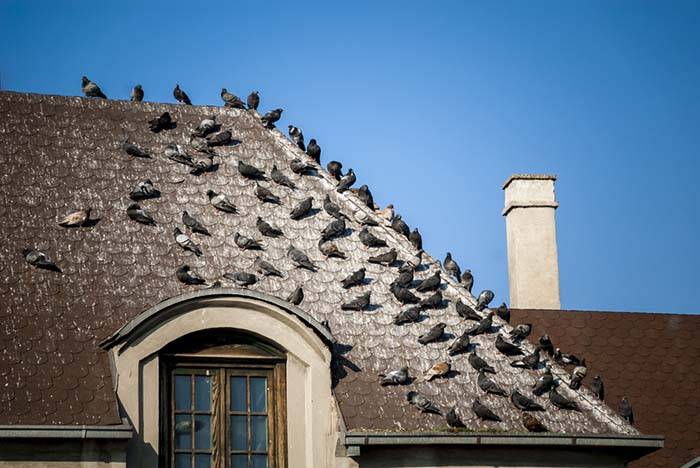
by Pigeon Patrol | Jan 25, 2022 | 4-S Gel Bird repellent, Animal Deterrent Products, Bird Deterrent Products, Bird Law, Bird Netting, Bird Spikes
It was the satirist Tom Lehrer who started the rot in 1959 with his song Poisoning Pigeons in the Park, which explained that it takes only a smidgen of strychnine and “it’s not against any religion to want to dispose of a pigeon” (though I doubt that many Buddhists or Jains would agree).
However, Woody Allen delivered the coup de grâce in his 1980 film Stardust Memories, when he referred to feral pigeons as “rats with wings”.
The term had first appeared in 1966 in an article in The New York Times, but Allen’s film reached a much wider audience. It was the final nail in the coffin for these birds – what could be more damning than to be on a par with rats? Ever since, feral pigeons have been one of the Disgusting Three, together with North American grey squirrels (‘tree rats’) and rats themselves. Their fall from grace was dramatic and, amazingly, took just a couple of decades.
Where did feral pigeons come from?
The rock pigeon Columba livia was the wild ancestor of the feral pigeon and the first bird to be domesticated, in the Middle East some 6,000 years ago. Since then its contribution to human wellbeing has been astonishing.
Until agricultural advances in quite recent times, a dovecote, rabbit warren and carp pond were the three essentials to provide fresh meat throughout the year in Europe. In addition to food, pigeons produced valuable guano so rich in nutrients that one load of it was worth 10 from any other species. In many countries, pigeon dung actually played a key part in agricultural development.
It might seem improbable that the rock pigeon, a relatively uncommon species of remote cliffs, was the first bird we domesticated. But this process did not involve capture and selective breeding – merely the provision of an alternative place to nest, usually a dovecote with rows of ledges or clay pots along its internal walls. Some designs could accommodate several thousand sitting females.
The pigeons themselves were given little food, generally flying off to forage elsewhere. Despite requiring minimal attention, each pair typically produced about 10 squabs a year. Pigeons were thus the perfect source of protein.
Darwin loved pigeons
The reliance on pigeons for food declined when it became clear that chickens were more suited to mass production. But the interest in breeding them remained: much of the first chapter of On The Origin of Species is devoted to pigeons, where Darwin describes the many breeds that can be created artificially.
Today, though, the pastimes of rearing and racing pigeons are waning in popularity. Both hobbies require a great deal of patience and dedication – commodities in short supply in the modern world.
Though pigeons were still an important food source in the 1800s, they were being stolen from lofts in large numbers to supply the newly fashionable sport of pigeon shooting: they were used as live targets in competitions.
The Hurlingham Club in London was founded in 1869 expressly for pigeon shooting. When the practice was made illegal in 1921, clay pigeon shooting was invented.
Apart from supplying us with food, fertiliser and fun, pigeons have also played a useful role in medicine. Prolactin, the hormone responsible for milk production in mammals, was first isolated in 1933 in pigeons; the same hormone stimulates the male and female birds to secrete ‘milk’ from their crops to feed their young.
Pigeons in war and peace
But pigeons are probably most famous for their ability to find their way home and deliver messages. This was first exploited 3,000 years ago, and by the fifth century BC Syria and Persia had widespread networks of message-carrying pigeons.
In 1850, Paul Julius Reuter’s fledgling news service used homing pigeons to fly the 120km between Aachen and Brussels, thereby laying the foundations for a global news agency, and the world’s first ‘airmail’ stamps were issued for the Great Barrier Pigeon-Gram Service.
The birds’ homing ability was harnessed in the two world wars: in the early 1940s, the American Signal Pigeon Corps consisted of 3,150 soldiers and 54,000 birds. Some 90 per cent of the messages got through. And these avian secret agents saved countless lives, too – of 54 Dickin Medals (the animal’s VC) awarded in World War II, 32 went to pigeons.
Feral pigeon in front of Lincoln Cathedral. © Oksana Kachkan/Getty
Are messenger pigeons still used anywhere?
Even now, homing pigeons remain a useful means of communication in remote areas. The Police Pigeon Service in Orissa, India, was retired only in 2002.
We are all beguiled by the internet, yet in 2009, as part of a PR stunt, a pigeon carried a 4GB memory stick 80km in South Africa; the country’s biggest internet service provider managed to transfer just 4 per cent of the data on the stick in the same time. Perhaps it’s hardly surprising that the Taliban banned people from keeping or using homing pigeons in Afghanistan.
Amazingly, despite decades of research, we are still not sure how pigeons find their way home over terrain they have never seen before, and with such apparent ease. Partly this confusion is because different breeds appear to rely on different cues.
The consensus is that pigeons use the sun and/or the Earth’s magnetic field on long journeys, with visual cues becoming important near their loft, though recent studies suggest that they may also use odours. Not bad for birds with very small brains.
Urban pigeon outcasts
The list goes on and on: the feral pigeon has contributed to civilisation in more ways than any other species of bird. So how – and, perhaps more importantly, why – has it become such a pariah?
The fundamental reason is that modern technology has rapidly reduced our reliance on pigeons. All that most people see today are the flocks of feral birds found in cities on every continent except Antarctica, the most obvious surviving trace of the close association between people and pigeons spanning several millennia.
It’s no wonder that feral pigeons thrive in urban areas. Buildings are perfect nest sites for these exiles, mimicking the windswept cliffs used by their ancestors. There can be few more stirring sights than masses of pigeons swooping above our city streets, occasionally with peregrines in hot pursuit.
Pigeons as tourist attractions
So it is difficult to see why feral pigeons are now so widely reviled. After all, they’re among the few birds that the average city-dweller sees regularly.
Lots of people enjoy their interactions with these charming birds, which have long drawn the crowds in tourist hotspots such as London’s Trafalgar Square and Venice’s Piazza San Marco.
And let’s not forget that feral pigeons are some of the most beautiful birds you could hope to see. Their plumage has a multitude of different colours, including metallic greens, bronzes and purples on the neck, as well as exquisite wing patterns.
Interestingly, most feral animals quickly revert to the appearance of their wild ancestors. All British mink, for instance, are now the same shade of brown as their wild relatives in North America, even though the original escapees from fur farms had a plethora of coat colours bred for the fur trade.
We don’t know why pigeons are the only feral animals to have retained the varied coloration of their domesticated ancestors.
Are feral pigeons a pest and a nuisance?
It is often said that feral pigeons are a real nuisance, but what exactly are the problems? The standard gripe is that there are too many of them and therefore they need to be controlled. It’s a familiar refrain. The accusation is also levelled at rats, magpies, crows, squirrels, foxes, badgers and deer, to name but a few so-called ‘pests’.
Of course, no one ever says what the ideal number of feral pigeons is, just that there are too many. However, there have been a handful of detailed population estimates, including one in Sheffield: 12,130 feral pigeons in a city of half a million people. This is likely to be typical of our cities.
The BTO’s Garden BirdWatch survey listed the feral pigeon as the 25th most frequently recorded species in the first quarter of 2010, whereas the wood pigeon was number five and the collared dove number eight.
Feral pigeons are also said to be ‘dirty’ because they foul streets and buildings. Personally, I find pigeon droppings much less offensive than graffiti, the chewing gum stuck on pavements and bus seats, and the masses of litter everywhere.
Picking up all of the filth left by people costs vastly more than removing pigeon poo. Likewise, protecting buildings from pigeons costs considerably less than cleaning up after domestic dogs.
Do pigeons carry disease?
Many websites list the diseases recorded in feral pigeons. How very scary. But let’s put this in context – many more diseases are known in people and their pets. Moreover, all animals carry diseases: the key issue is how often they transfer to humans, and there is little evidence of this happening with feral pigeons.
Plus, domestic pigeons often come into contact with feral pigeons but stay perfectly healthy. In other words, feral pigeons simply do not pose a significant health risk. It’s a non-issue.
In November 1855, Charles Darwin, arguably the most famous pigeon fancier of them all, sent a letter to his great friend the geologist Charles Lyell, who was about to pay him a visit. Darwin wrote: “I will show you my pigeons! Which are the greatest treat, in my opinion, that can be offered to a human being.”
How right he was!
FERAL PIGEON TERMINOLOGY: Wild, domestic or feral?
Feral pigeons live worldwide, but their wild ancestors are rare and in retreat. It’s important to get your terminology right when discussing pigeons.
Feral pigeons (sometimes called city, town or street pigeons) are descended from birds that escaped from dovecotes or other captive situations. In turn, domesticated pigeons were bred from wild rock pigeons (a species formerly known as the rock dove, but renamed in 2004).
Feral pigeons live in urban areas on every continent except Antarctica, with a global population numbering in the millions. By contrast, wild rock pigeons are now confined to outlying Scottish islands and remote parts of the Mediterranean, North Africa and western Asia.
But since it is hard to tell feral from wholly wild birds, and hybridisation is rife, it is difficult to map their respective populations accurately.
A day in the life of a city pigeon
The daily routine of a pair of pigeons in central London might look like this…
02.00 The pigeons are roosting side by side on their windowsill nest near Trafalgar Square. Their two eggs hatched a day ago.
06.00 At dawn, the female flies to the square to find food. Meanwhile, her mate gives their chicks some of his rich crop milk.
09.00 The female joins a feeding frenzy as seed is scattered (illegally) by a pigeon lover, before a warden moves the birds on.
11.00 Back at the nest, the female greets her partner with a cooing and bill-rubbing display. He then heads to St James’s Park to be fed by office workers having lunch.
15.00 After preening one another, the pair mate briefly at the nest. The female leaves again, while the male broods the squabs.
20.00 Reunited on their window ledge, the adult pigeons coo and bill-rub together before settling down for the night.
DID YOU KNOW?
- Pigeon ‘milk’ is a cottage cheese-like fluid secreted from the lining of the crop. Flamingos are the only other birds to feed their young this way.
- Experiments have shown that the humble feral pigeon can be trained to distinguish music by Bach and Stravinsky, and paintings by Monet and Picasso.
Source
Pigeon Patrol Products & Services is the leading manufacturer and distributor of bird deterrent (control) products in Canada. Pigeon Patrol products have solved pest bird problems in industrial, commercial, and residential settings since 2000, by using safe and humane bird deterrents with only bird and animal friendly solutions. At Pigeon Patrol, we manufacture and offer a variety of bird deterrents, ranging from Ultra-flex Bird Spikes with UV protection, Bird Netting, 4-S Bird Gel and the best Ultrasonic and audible sound devices on the market today.
Voted Best Canadian wholesaler for Bird Deterrent products ten years in a row.
Contact us at 1- 877– 4– NO-BIRD, (604) 585-9279 or visit our website at www.pigeonpatrol.ca
Pigeon/Pigeon Patrol / Pigeons Roosting / Vancouver Pigeon Control /Bird Spikes / Bird Control / Bird Deterrent / Pigeon Deterrent? Surrey Pigeon Control / Pest /Seagull deterrent / Vancouver Pigeon Blog / Birds Inside Home / Pigeons in the cities / Ice Pigeons/ What to do about pigeons/ sparrows , Damage by Sparrows, How To Keep Raccoons Away, Why Are Raccoons Considered Pests/ De-fence / Pigeon Nesting/ Bird Droppings / Pigeon Dropping/ woodpecker control/ Professional Bird Control Company/ Keep The Birds Away/ Birds/rats/ seagull/pigeon/woodpecker/ dove/sparrow/pidgeon control/pidgeon problem/ pidgeon control/flying rats/ pigeon Problems/ bird netting/bird gel/bird spray/bird nails/ bird guard
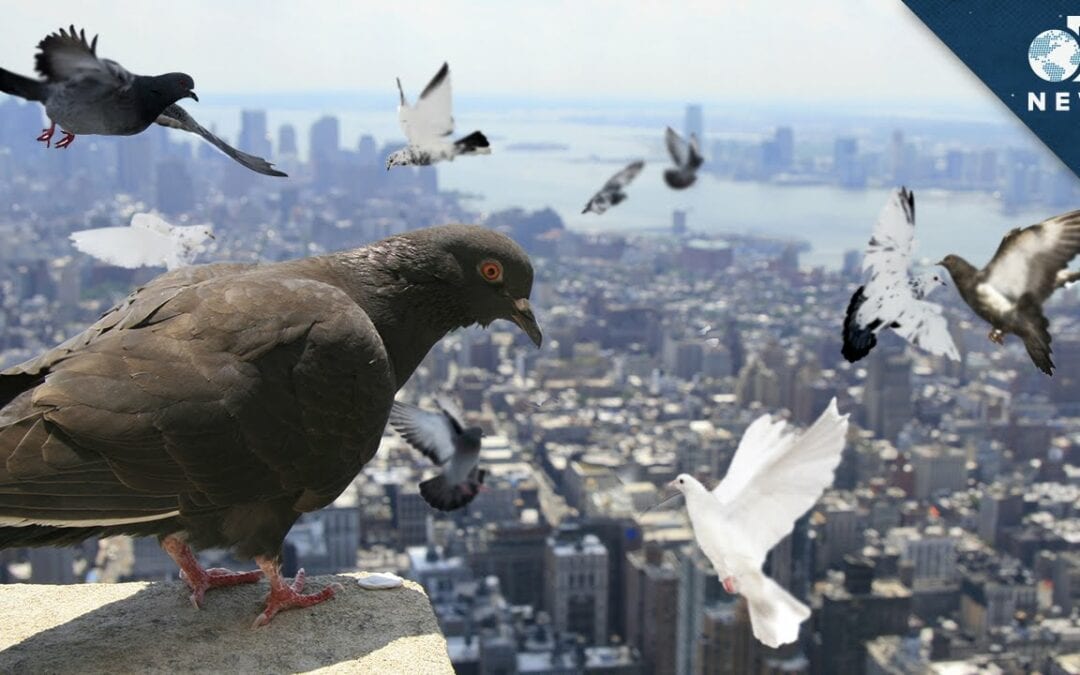
by Pigeon Patrol | Dec 24, 2021 | 4-S Gel Bird repellent, Animal Deterrent Products, Doves, history of pigeons, Pigeon Predators, Pigeon Spikes
In urbanized areas, pigeons are part of the daily life of city dwellers. We see them strolling on the sidewalks without fear of passers-by and cooing under bridges over passing cars. As such, the pigeon is not really a problematic bird species, but when perched, it can release an impressive amount of droppings on anything below. If you are facing this problem, whether inside or outside your home and want to deal with it, here’s how to clean up pigeon droppings.
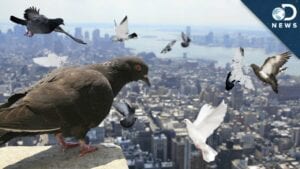
Preliminary measures before cleaning pigeon droppings
Cleaning pigeon droppings involves removing the guano from the outside or inside of a building after the animal has been removed. Pigeon droppings are generally not harmful to health, except in extreme cases. On the other hand, they can strongly affect the appearance of a building, cause odours and attract insects. Except in certain unusual situations, you can remove the pigeon droppings yourself, unless the extent of the problem is beyond your control or you are experiencing breathing problems. At such times, it may be appropriate to hire the services of a residential exterminator.
Whether the pigeon droppings to be cleaned are on the front of your building or in your attic, the same process can be used. But before you rush to buy products or start cleaning the area, a health and safety risk assessment is essential, especially if the work will be done at height.
It is also recommended to take certain preliminary measures. A face mask, disposable coveralls and rubber gloves must be worn at all times, as well as safety glasses and a good pair of boots.
Products used to kill bacteria in pigeon droppings
There are many cleaning products developed especially for bird droppings. First, there are disinfectants, designed to kill bacteria and organisms, and simple cleaning agents, which, as their name suggests, are simply designed to clean. In most cases, a bucket of hot soapy water containing a little household detergent is a simple but ideal cleaning solution.
Cleaning pigeon droppings is no different from any other thorough cleaning work. With the right equipment, the work will be done quickly. To remove the guano on window sills and the like, a scraper is all you need to remove it. Moisten overly dry guano to soften it before removing it and reduce the amount of dust thrown into the air. Once all pigeon droppings have been scraped and removed from the surface, simply wash the area with a brush and the cleaning solution mentioned above.
What should be done with the excrement next? Small quantities of pigeon guano can be safely disposed of in a domestic or commercial waste bin.
When pigeon droppings become too overwhelming
Urban life means living with a host of animal species, including pigeons. Although this bird is not a threat to human health, the droppings it produces are never desirable, either outside or inside a building. Fortunately, with the right equipment, it is quite easy to remove pigeon droppings.
Source
Pigeon Patrol Products & Services is the leading manufacturer and distributor of bird deterrent (control) products in Canada. Pigeon Patrol products have solved pest bird problems in industrial, commercial, and residential settings since 2000, by using safe and humane bird deterrents with only bird and animal friendly solutions. At Pigeon Patrol, we manufacture and offer a variety of bird deterrents, ranging from Ultra-flex Bird Spikes with UV protection, Bird Netting, 4-S Bird Gel and the best Ultrasonic and audible sound devices on the market today.
Voted Best Canadian wholesaler for Bird Deterrent products ten years in a row.
Contact us at 1- 877– 4– NO-BIRD, (604) 585-9279 or visit our website at www.pigeonpatrol.ca
Pigeon/Pigeon Patrol / Pigeons Roosting / Vancouver Pigeon Control /Bird Spikes / Bird Control / Bird Deterrent / Pigeon Deterrent? Surrey Pigeon Control / Pest /Seagull deterrent / Vancouver Pigeon Blog / Birds Inside Home / Pigeons in the cities / Ice Pigeons/ What to do about pigeons/ sparrows , Damage by Sparrows, How To Keep Raccoons Away, Why Are Raccoons Considered Pests/ De-fence / Pigeon Nesting/ Bird Droppings / Pigeon Dropping/ woodpecker control/ Professional Bird Control Company/ Keep The Birds Away/ Birds/rats/ seagull/pigeon/woodpecker/ dove/sparrow/pidgeon control/pidgeon problem/ pidgeon control/flying rats/ pigeon Problems/ bird netting/bird gel/bird spray/bird nails/ bird guard

by Pigeon Patrol | Dec 16, 2021 | 4-S Gel Bird repellent, Animal Deterrent Products, Bird Deterrent Products, Bird Law, Bird Netting, Pigeon Droppings, Pigeon Patrol's Services, Pigeon Predators, Pigeon Spikes
All birds should be hatched wild and live and fly free but unfortunately many don’t. Whether they are our pets because they are domestic or because they are rescued from the wild, they can’t free fly safely. We would break your heart with all the stories of pet birds lost. And how they suffer.
The biggest risk to a pet pigeon or dove is getting outside and being killed by a predator before he can get back in to safety. Wild pigeons derive all their security from being part of a flock that stays alert watching out for predators and knows what to do (and has the education and physiology to do) what is needed when under attack. A pigeon alone is extremely vulnerable. A domestic pigeon outside alone is in imminent danger. It is unsafe to take a pet pigeon outside unprotected. They need to be in an aviary or in the house.
Your pet pigeon or dove doesn’t want to get lost but many do, especially when allowed to hang around outside in the backyard or ride along unprotected on their person’s shoulder. And clipped wings do not protect birds outside. Birds are by their very nature aerodynamic and being outside unprotected with clipped wings is no safer. One little startle and, with the air currents outdoors, they are airborne. And in danger. Wild pigeons and doves derive all of their security from their survival of the fittest DNA, their education growing up in the wild and from being a part of a flock. Your pet pigeon, even if hatched wild, is at terrible risk if permitted to free fly. You (and your dogs and your patio cover, etc. etc.) offer no protection to pet birds, only an illusion of safety. We too wish your pet could fly free but the odds of tragedy are very high. It is just too great a risk.

Reprinted from the Palomacy Help Group, written by Ashley Dietrich
We’re discussing free-flying pet pigeons, and why not to do it.
It sounds great, right? These fantastic fliers, out in the fresh air, doing what nature intended? It sounds wonderful, and I wish I could give my birds the whole sky to enjoy. While pigeons and doves DO need exercise and sunlight, these needs can be met with a predator-proof aviary, out-of-cage time indoors, secure leashes, etc. Here are the reasons Palomacy advocates against allowing domestic birds outdoors un-caged/un-tethered:
1. Predators
— Hawks – they’re everywhere. I’ve read a report about a hawk grabbing a parrot off of an owner’s shoulder. Raptors focus tightly on their intended prey, swoop in, and won’t always notice or care if a human is nearby. Two years ago, a small hawk tried to get my dove Cecily as she sat inside the screen of my open window, sunning after a bath – I was sitting less than 3 feet away. My windows are now covered in hardware cloth in addition to the basic window screens, so it is safe to open the glass. I live in the woods, but hawks are city birds too.
— Cats and Dogs. Even with the benefit of wild instincts, countless birds fall victim to outdoor cats and dogs. Cat attacks are the #1 human-related cause of bird mortality. I’ve seen this first-hand too many times as a wildlife rehabber, and I’ll spare you the gory details.
2. Birds can get lost
Birds are more difficult to retrieve than 4-legged pets. It’s easy for something to spook a bird – if they go too high or too far, it can be even harder to get them back. They can cover more distance, quickly – and a bit of wind exacerbates this problem. The tamest of birds could bolt if startled, and not all pigeons have a homing instinct. Adding to the complications, many people do not realize they are pets, so birds are less likely to get help from strangers. The pigeons and doves I have retrieved after they were found outdoors have all been suffering from dehydration or hunger to some degree. They cannot find food and water in the wild.
Source
Pigeon Patrol Products & Services is the leading manufacturer and distributor of bird deterrent (control) products in Canada. Pigeon Patrol products have solved pest bird problems in industrial, commercial, and residential settings since 2000, by using safe and humane bird deterrents with only bird and animal friendly solutions. At Pigeon Patrol, we manufacture and offer a variety of bird deterrents, ranging from Ultra-flex Bird Spikes with UV protection, Bird Netting, 4-S Bird Gel and the best Ultrasonic and audible sound devices on the market today.
Voted Best Canadian wholesaler for Bird Deterrent products ten years in a row.
Contact us at 1- 877– 4– NO-BIRD, (604) 585-9279 or visit our website at www.pigeonpatrol.ca
Pigeon/Pigeon Patrol / Pigeons Roosting / Vancouver Pigeon Control /Bird Spikes / Bird Control / Bird Deterrent / Pigeon Deterrent? Surrey Pigeon Control / Pest /Seagull deterrent / Vancouver Pigeon Blog / Birds Inside Home / Pigeons in the cities / Ice Pigeons/ What to do about pigeons/ sparrows , Damage by Sparrows, How To Keep Raccoons Away, Why Are Raccoons Considered Pests/ De-fence / Pigeon Nesting/ Bird Droppings / Pigeon Dropping/ woodpecker control/ Professional Bird Control Company/ Keep The Birds Away/ Birds/rats/ seagull/pigeon/woodpecker/ dove/sparrow/pidgeon control/pidgeon problem/ pidgeon control/flying rats/ pigeon Problems/ bird netting/bird gel/bird spray/bird nails/ bird guard
